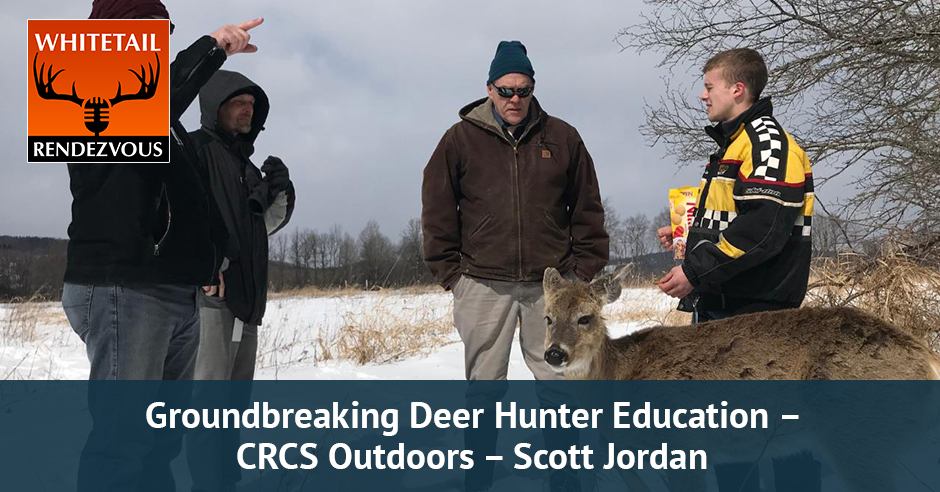
There is so much to explore about the outdoors, and people who encourage others to go outdoors and discover nature are heroes. Scott Jordan, the Founder of CRCS Outdoors, tells us why and how he started the deer hunter education program. He emphasized the importance of teaching the younger generation to enjoy the outdoors, hunt, and do other activities with nature. Scott talks about the activities that they have in their programs that help instill confidence to students. CRCS Outdoors is not just about exploring and hunting but learning as well. With this principle, Scott strongly adheres to education as the foundation of hunting. He then shares some tips to educators who want to nurture a program like CRCS Outdoors.
Listen to the podcast here:
Groundbreaking Deer Hunter Education – CRCS Outdoors – Scott Jordan
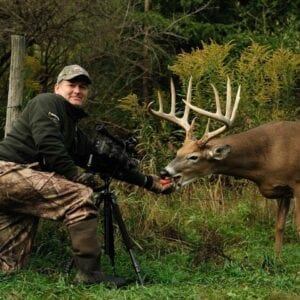 I’m with Scott Jordan. He created a classroom setting, a curriculum, an environment that kids can learn about the outdoors. He did it so well that he’s been awarded the Rural Teacher of the Year. Scott, I’m excited to have you on the show. We’ve got a lot to talk about. My relationship with CRCS isn’t going away. He’s going to be around for a while. Scott, welcome to the show. Let’s tell people about the birth of CRCS.
I’m with Scott Jordan. He created a classroom setting, a curriculum, an environment that kids can learn about the outdoors. He did it so well that he’s been awarded the Rural Teacher of the Year. Scott, I’m excited to have you on the show. We’ve got a lot to talk about. My relationship with CRCS isn’t going away. He’s going to be around for a while. Scott, welcome to the show. Let’s tell people about the birth of CRCS.
Thank you, Bruce. In 1993, I started at Cuba Rushford. That’s when the program began. Part of it has to do with my background because I was a fisheries biologist for the Alaska Department of Fish and Game. I was a bald eagle hacker for the New York State Department of Environmental Conservation, the Endangered Species Unit. I tried to bring what works in the wild and applications that people use in the job place and to the classroom. I do feel that that’s why our program is successful. I teach all eighth-grade sciences in the morning. In the afternoon, it’s all fisheries and wildlife technology. All of the stuff that we do, I film it in HD. Collectively, it’s known as CRCS Outdoors. From that, we have our television show, which is on the Pursuit Channel. We finished our seventh year and Wild TV in Canada. We’ve been on cable down south quite a bit. We’ve been featured on other shows like Bass Pro Television, The Force, Macmillan River Adventures, and all of those.
We’re trying to share our platform and get people to realize our nineteen percenters, our rural kids, are important too. There are many things that come up in education that don’t involve our rural students. Providing them with a platform and a place for them to get opportunities so that they can do things above and beyond. I can’t tell you how rewarding it is to see how successful some of my students have been and their future is awesome. I can’t wait. We can go into a bunch of different details and some of the different things that I do. One of the things I wanted to share with you though, and I’m sure you’re aware of some of these, but there’s a study that was done by Cornell University and it says that if we don’t get students involved in the outdoors before the age of eleven, we’ve lost them. That’s a responsibility of ours. We talked about our aging clientele that hunters are aging out and we’re not getting replaced. Take a look at the number one growth area and that’s women in the outdoors, especially in areas like archery. We need to concentrate on those things and work on getting those numbers because that educated public, whether people realize it or not, we’re going to lose our voice.
Every break that we have, I take students on trips around the world to go hunting or fishing. Those opportunities change those students. It might take ten years to see a difference in a young person, but when I take them to New Zealand, for example, I can see a kid change in a week. They are totally different persons when they come home. That is huge for me. There was a study that was done out in Washington and Oregon. You’re probably not going to hear about it because the study was looking at young people with guns and youngsters that kill. It didn’t go the way that they had planned because the bottom line is that what they found is kids that hunt have empathy. They understand death because they’re part of it and they are the least likely to be pulling the trigger on a human being.
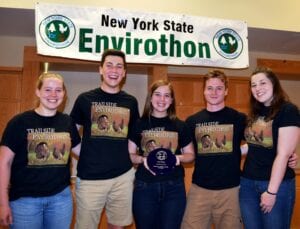
That’s the thing out there that doesn’t get shared, but it needs to be. Our youth is our future and we need to do something about it. Our motto for our show is making a difference one young hunter at a time, one young fisherman at a time or one young student at a time. It depends on what we’re doing. I’m open to anything and we’re always open to trying to help schools across the country. That’s what we’re trying to do right now is promote our program so that people in other schools can do something similar and expand our knowledge base. There’s so much that comes from a student having choices in what they learned and having them also the responsibility and leadership. The combination is outstanding.
How does somebody get ahold of you either directly or on social media?
They can email me at SJordan@MyCRCS.org and call me at (585) 808-3768. We are on social media. We’re on Facebook, Instagram, Twitter. My daughter, Brooke, handles most of the social media for me. It’s hard for me to keep up. I’m an old guy. I’ve got some work to do.
Brooke does a great job. She was on the show. Check her Facebook Live or reach out to CRCS Outdoors on Facebook and we’ll get you connected. People, if you have some questions, get ahold of Brooke or Scott and ask them. Everything that Scott told us is that it’s up to us. It’s up to my generation and Scott’s generation to make sure that those who wish to enjoy the hunting tradition and the outdoor lifestyle have that opportunity. These flat people do not want that opportunity and that tradition to live one more day. That’s just the way it is. We have to find our voice and through this series of interviews in podcasts with Scott and Brooke, we’re going to investigate that and work through the process. We’re going to be able to show you and talk to the students about the skill sets that they’re learning about editing and the outdoors, and having conversations with these students, especially the young man that got his first stag and his life changed. Scott, why don’t you talk a little about that situation with that young man?
Being able to take him to New Zealand was outstanding. He went deer hunting with me. He shot a couple of does here in New York. We are always pushing for the hunting age to get lowered. It’s twelve with archery and fourteen years old with a gun. When we went to New Zealand, it’s up to the parents as to how old you are. I was lucky to be able to film Zach who is six, take his first big game animal which was a goat. His brother Sam got to take a ram and he was eight. Their parents felt that they were ready. They’d been practicing with them. They knew their hunter ed stuff. That should be a parent decision, not a state decision.
You cannot enforce laws when you do not understand the background of hunting. Share on XThat’s one thing that we’ve always looked at. There are classroom things that I try to bring forward for my kids just like for this young man, it was his bucket list. One of my assignments is I have students tell me what their top twenty things are. For hunters, that’s going to be their top twenty animals they want to shoot or whatever. Once they get that bucket list, I have it narrowed down to the top three and then eventually the top one. I do a PowerPoint on exactly how they can make that happen. For a lot of us older people, we wait too long for that bucket list. You want to get the ball rolling and people start to think, “I can do that.”
The number one thing that I can tell you very honestly, this is the 98th person I’ve taken to New Zealand. I’ve taken 100 and some to Alaska. This confidence, when we go out hunting and you see how those kids are, how they behave, their mannerisms and whatever. A change occurs when a young man like that gets to take a huge red stag. When he comes home, he’s a different person. It’s rewarding as an educator, even as an adult, to see that difference. Some of the other projects that we have are that students have to be managers of our different facilities. They have to work their way up and it takes a couple of years before they can be in charge. I’ll have many students working underneath them.
When they go to apply for scholarships here, there’s a huge part for leadership. There’s a huge part for community service. If I get a phone call from a prospective employer, I know exactly how that kid is as a worker, how they get along with people and how they aren’t being in charge. Usually, my kids are able to seriously outcompete for either a job, a scholarship or making it to the college of their choice. I have a student going to Cornell. She worked with the environmental stuff and fisheries. I’m extremely proud of that. She’s an outstanding young lady and Cornell is a very hard school to get into. Those are the types of things that you want to make happen for your students.
You mentioned something before about confidence. As hunters, we know what confidence allows us to do. Let’s unpack that a little bit more. Sometimes young people, to be in a place or a position to gain that confidence is extremely hard. In some places, it’s non-existent, yet you put them in a situation where they are either going to succeed or fail. There’s no byproduct because we don’t want to ruin the game. To me, that’s a failure. The confidence is one clean kill shot is the best it’s going to get. Let’s talk about instilling confidence in every one of your students by having them in your curriculum.
It comes down to knowledge. If you know what you’re doing, it’s like if you’re going to do a research paper if you’ve done the research yourself, you didn’t go and look it up somewhere, you know what happened. For kids that have this background, they know what’s up. If you do your hunter ed training, you go and shoot and you can hit a target at 200 yards, that should translate easily into the field. I have a laser shot system that I used to use with students to practice on elk shooting at a screen. For me, what it does is take away the whole buck fever thing so that they’re more comfortable. It’s just more experience. It’s like, “I’ve been here before. I’ve done this before.”
You see it with a little toddler. The more that they can venture away from their mom and then they will run right back. You’ve got to bring them along and there’s got to be things and success, that’s important. If you’re going to constantly take a kid out, make them extremely cold and hungry, and they’re not going to even see anything, that’s in the old days what you’d say, “You’re making the kid tough.” That’s great. I grew up that way. If you’re going to do that now, there are many other avenues that that kid is going to take and you may have lost them. You have to treat those opportunities with care.
When we’re going to do things, I try to find outfitters that are outstanding. We go to Lake Ontario with Wet Net Charters. That dude, Matt Yablonsky, he knows stuff. He knows those fish, he’s intelligent, and he knows the science behind it. When it comes time to catch and fish, usually we have our limit by 10:30 in the morning. He knows what he’s doing. I tried to set up opportunities that way so that you can make sure that there’s a certain degree of success and that they’re going to feel good about it. You want them to do it again. You want them to be an active supporter of exactly what you’re doing. Hunting and fishing for me are where it’s at.
I’ve spent quite a bit of time in Alaska. If you are an Alaskan resident, you look at all the different things that you can hunt as a lifestyle. We would go out late summer and shoot a moose, and then we’d go out in the early fall and shoot a caribou. If you go down to Valdez and catch halibut, you go to a dip-net salmon, go up in the north country and put up 60 to 80 pounds of berries. You have everything you need to eat. People say it’s expensive to live in Alaska. It depends on your choices because honestly, the only thing I had to buy was milk and vegetables because you’ve provided for yourself. You’ve got to take a look at yourself and say, “This is the lifestyle I enjoy.”
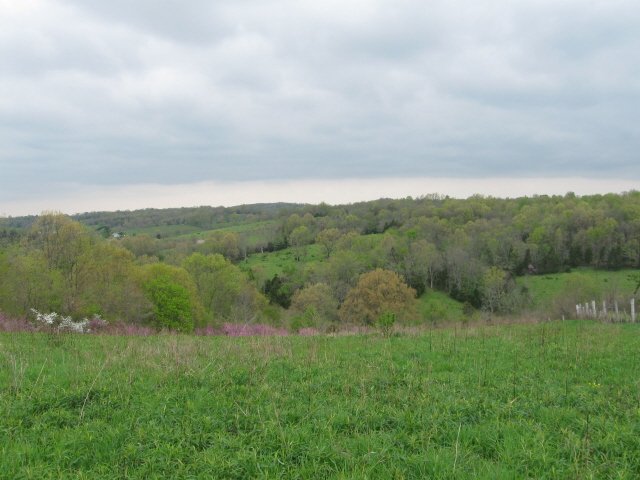
I got some great trophies. I had a caribou that I shot. He was 21 miles from the airstrip when I shot him. He was big for me to do that, but it took me two trips because in Alaska, you’ve got to hump the meat out first. That was a 42-mile pack for me. When I take a look at that caribou, not only did I eat him, but I did mount him. He is on the wall in the Wildlife Center. Every time I take a look at that caribou, it takes me right back to that time. I lost 23 pounds in nine days and I was covered in black, blue and green. As you know, Bruce, how tough the packing life is. The lessons learned from something like that, you can’t trade that for anything. For all the hypocrites out there, that sit there and judge us, I love this one because I usually end up in a few discussions. It’s okay that we eat stuff, but as an organism, we’re only 20% efficient at consuming that.
That means we’re getting rid of it as waste for the most part. That part’s okay, but it’s not okay to take that animal and mount it. I have such a problem with that, especially some people who’ve given me a hard time and they’re sitting there with a leather belt, leather purse, leather shoes or leather seats in their car. They eat things like Jell-O. There’s such a list of products that are made and an animal did have to die for that product to be made, but they don’t know about it. They can judge us from hunting but yet, they’re sitting there and doing the same thing. They have somebody else do the dirty work for them. One of our projects is we’re going to be filming from beginning to end. Meat doesn’t just come out in a plastic plate. I would like to get that out there. On television, we are very limited. There are certain parts of the skinning process we can’t show. We can’t show much blood. Your hands are tied with some of that, but we’re going to put it on a YouTube platform or something where we can share it. We need a voice.
When we talked about it, that’s one of my main things. Steven Rinella has a good blog out there about the economic aspects of why we hunt. People completely don’t understand the billion-dollar industry that hunting and the outdoor industries represent. It goes right over their heads. That’s part of the voice. During the nine-day gun season in the state of Wisconsin, 500,000 people go and they each spend about $249.67. You run the numbers and all of a sudden, it’s millions and millions of dollars that are spent in nine days in communities and they have two seasons. They have the hunting season and they have the summer season. The economic impact of that is significant.
The people from Chicago that only go up there in the summertime but never hunt. They don’t realize that because honey exists, they have nice facilities and the places to go in the summertime. They might say, “I don’t care if you’re hunting or not.” It’s fine, then Joe’s Cabins on Lake Jones doesn’t exist anymore. Why is that? Those are the types of conversations when you start finding your voice, you make people think and you connect the dots. “The animal died. I ate the animal and the animal is on my wall.” The wolf’s hide that you can see, I was surrounded by wolves in British Columbia. That’s a wolf hide. He died but the story, holy fright. I get chills now.
It’s the journey and like I was talking to Brooke about sitting with the elders up in Kuujjuaq up on Ungava Bay, just sitting with these elders and they said, “When our people came across the land bridge, it was simple. If the caribou came, we live. If the caribou don’t come, we die.” That was it because the caribou was everything. That was the grocery cart. That was everything they had. You start talking about that and Steven Rinella and the American Buffalo. If you haven’t had your students read that, it’s American Buffalo: In Search of a Lost Icon. Every student needs to read that because it talks about it and about the American buffalo. It talks about the how and the where, and his hunt up in Alaska for a buffalo.
More than that, he did so well research. It’s eye-opening to realize the role the American buffalo played in our history. Bone China, where do you think they get the bone for Bone China? Bleached buffalo skulls. Think about that. All these multi-millionaires, the Astors or the Kennedys or whatever. They’re eating off Bone China and part of that China is buffalo skull. Start connecting those dots and it’s just amazing. You have to become a student of the animals we hunt, of the people that were there, way before we were and pull it all together, and it becomes a journey. It becomes a reality that you’re educated and you’re going to share this knowledge about how it all worked out and how hunting has helped create the nation that we have now.
By us eating meat and fat changed our position in the food web. You went from being eaten to being a consumer. That’s driven us. There’s a huge trend that’s going on, which is problematic in the country. Hunters need to help themselves by doing their background and be educated so that when things come up, they sound educated when they’re talking to somebody about things. A lot of the state agencies that hire for making decisions for hunting and fishing, we have a lot of people now that are getting those positions that don’t hunt or fish. There is a change going on across the country in that realm. If you don’t agree with it, and it’s tough that a lot of people now are going to manage those populations but don’t believe in hunting or fishing even for enforcement. I have a buddy who was a conservation officer in Idaho and one year he called me, he had six openings. Nobody who was applying for those jobs hunted or fished. How do you enforce laws when you don’t understand the background in any one of those areas?
Hunting is like searching for buried treasure. You have no idea what is going to show up. Share on XThere are job opportunities if kids want them. The toughest thing for me to tell kids here is that if you want to work in fish and wildlife, there’s a great chance you need to move. You’re going to have to go someplace else because New York State hires by Civil Service exams. You’ve got to take an exam that’s offered once every four years and then if you’d make it to the top of that list, you’re going to have to go wherever they tell you to go. It’s a tough deal and there are a lot of people that would do a lot of good for our industry if they were there. You go to a place like Alaska that’s got seven different agencies that hire at least. There are offshoots in every direction. We need these people to be out there in helping with our future generation. I want to be able to hunt and fish. I want my daughters to be able to hunt and fish for their entire lives and not have an issue with it. That’s such a part of my life, I have such a hard time with thinking it at any time being lost.
You talked about confidence. Let’s take a little break. Here you are and you’ve got experience, but what’s the one thing you wish you knew five or ten years ago that you now know that you’re like, “I wish I knew that,” or the one big thing that surely makes a difference on how you hunt.
We haven’t talked a lot about whitetail hunting yet, but for us here, that’s our big thing. We do have bears moving in and so we do have an occasional opportunity with that. For us, it’s whitetails and turkeys, but the one thing that I would say that has made the biggest difference in my hunting career is the location. What I mean by that is that there are times when I’ve set up three stands. I did it because of the value of that tree. That tree is a perfect tree to put a tree stand in, which is not the way to pick your site. As you evolve in hunting, all of a sudden you realized because I have a case in point. I had this oak tree and it was the best tree to sit in. Occasionally, I’d get a deer from that tree. I moved 60 yards to the east in a different tree. I’ve shot ten decent bucks from that tree. It was the location of the positioning of that tree. It opened up avenues that I never realized were right near me. I’m a climber. I want to see and so I try to get up as many different trees as I can. I do it all the time. If I’m not happy with my setup and I’ll go and look for a new place. That’s changed a lot for me.
The other thing I’d have to say is sitting. When I was a kid, I couldn’t sit still. Everybody says, “You’ve got to sit still.” They can tell you that all they want when you’re young and you’re like, “I can’t.” One time I was sitting there in a tree stand. Here was my one moment. I knew it was a great spot. I spent a lot of time picking it out for it has a corridor, the whole nine yards. I got down and it was cold, whatever. I did a perimeter of my property and all of a sudden, I heard a shot and I was like, “That’s right on my border.” I continued on and got to the border. Here’s a guy and he’s on his property. He was like, “You should have seen that ten point.” Lo and behold, here’s the track and I followed the track and that track went right under my tree. From that point on, I sat. You have some experiences like that. Those are the ones that make you learn the hard way.
Let’s talk about that. You sat and you got on the tree stand. You get the observation and it’s cold. What time did you say, “I’m going to call it? I’m going to go for a little stroll around my 40 or 100 acres?”
It was before 9:00. I knew I should have stayed there.
Did you walk the whole perimeter? Did you have 40 acres or 100 acres? What do you have?
It is about 88 acres and I did about half of it.
Someplace in there, when you get down from your tree, that deer was no more than 100 yards to 200 yards from you probably.
He came from another property. That guy missed it. He came right across the tree. It would have been a slam dunk. Those are the things that you can’t be happy nowadays. Don’t think you know everything. I am a lifelong learner of the whitetail. I’m always open to new ideas and, “You’ve got to try this or do this differently,” or whatever. Don’t think you’ve ever got them in the bag because they will surprise you. “I have a deer here,” and being able to show students how so unique they are and how different they behave is amazing. That’s what keeps us going after them.
Let’s go back to that, I’m trying to figure out what happened to that deer. I thought maybe because he was so close and he was bedded there, he knew you were there and when you left, he said, “I’m going to get up and walk down.” If he came from another property, that’s a different thing. During the gun season and the rut, just commit to your stand and sit there because you have no idea that in a matter of nanoseconds, you can harvest a buck of your lifetime.
In the Eastern US, farms were used to be pretty big. As they’ve been sold and partitioned up, most people don’t have many acres. It’s hard to start a kid out and have them go sit in a tree stand, freeze their butts off, they can’t move and they can’t eat. That’s what makes it hard. Once they started the youth season, it’s much easier for me to get the kids because the temperatures are a little better. If I can get them in a blind, they have a little more opportunity to move centers and it’s quite as important. We’ve been very successful at having kids participate that way. It’s tough and that’s another reason why I like taking kids to New Zealand because it’s all spots and stalks.
People in the West have a totally different concept than we do in the East. It even comes down to turkeys because I love turkey hunting. I’ve got some great Pro Staffer that helped me out taking kids like Dan Taylor and his dad. They help me take kids out and shoot turkeys. It is tough in the East. Eastern turkeys are tough. I talked to some of my friends in the West and they’re like, “There are many turkeys here. We don’t even do a show on it because they’re like rats.” Everybody has their own thing that they’re interested in and it can vary by region and so you get that. Kids that get the opportunity to travel can see that. It’s like there is something different outside the borders of Allegheny County. That’s one of the reasons I love to take kids and travel with them. They get to experience many other things and see how big life is.
Whitetails are tough no matter what state you’re hunting. I know you’ve got a couple of things that you want to bring to the forefront. Let’s see item number one.
We’ve got youth in the outdoors, women in the outdoors and outdoor education. One of the hardest things for me to do is to get properties to take kids on. Those people, the farmers and those property owners that allow us to bring kids in because that’s the toughest thing. Some people think that their property doesn’t have hunters on it, but you’d be amazed. There’s a gentleman and his name is Bruce Heinz. He’s always been gracious and he lets me bring kids out there to a deer hunting. Opening Day at our house is like a national holiday. It’s a big deal. We usually put three to four deer in the freezer and my family eats off of that all year.
It’s important to us. Some people probably don’t understand that. Until I was nine years old, I grew up on a road that had thirteen kids my own age. I was majorly concentrated in sports. All of a sudden, we moved out to Black Creek where I’m at and there was nobody. The time I spent with other kids, I started spending in the woods. My dad tried to take me deer hunting, but he hadn’t done it much. I think he only ever shot a doe in his life, but at least he provided me with that opportunity. Did I catch the bug from an early age? From that point on, I was a deer hunter, whether I was any good at it or not, but we had a lot of deer then.
I can’t stress it enough, trying to get kids in the outdoors and taking youth hunting. As you’re probably aware of, Bruce, I’m sure. A parent will ask me, “I want to get my kid in the outdoors, but he’s young. What should I do?” Studies have shown that starting a kid out fishing first probably when they’re young is probably the best way to get a kid involved in hunting later. You take a look at some of the research that’s been done on things like that. You’ve got to be able to share your passion because this is stuff that I’m passionate about. We need to have a voice. If we sit there because in a lot of cases hunters don’t promote themselves well or not enough, and then we’re going to lose our rights. That’s a huge deal for me.
A lot of people used to say, “Why don’t you keep having kids? You can get a son to take.” I have three daughters and they can do everything that boys can do, especially with hunting. It’s neat because hunting is a level playing field and the guides in New Zealand will tell you that girls are a better shot anyway. It is important for me to have women in the outdoors. They’re such a good promoter of what we do. About 40% of the kids that I take are female and they listen well, and they shoot well. That’s been important. I’ve gotten to see one young lady go from vegan to be a hunter and now provide her own meat. That’s interesting.
For me, it’s like searching for buried treasure whether you’re hunting or you’re fishing. You oftentimes have no idea what’s going to show up. There’s something inside all of us. That part is the adrenaline rush. I am always looking for that next adrenaline rush. I get as much from taking a young man with me this year to New Zealand and him shooting a gigantic stag was as good as if I pull the trigger myself or better because you see how much that has changed his life. Bruce, I wanted to touch base with you. When Brooke was doing our school website, the CRCS Outdoors website, she showed you our new one, which is under construction. The kids are trying to take our old one and convert it to the new one. I’ll give you the web address for the old one, it’s New.CRCSWeb.com/wildlife/Site2. That’s our old site and we’re converting all of that to the new site. Unfortunately, they were different platforms, so it wasn’t an easy fix. If we could put that site out for everybody to see because that has our stuff on it. There’s a lot of stuff that’s missing on the new site. It’s in progress. Students will be working on it in and then it will be up to date from there.
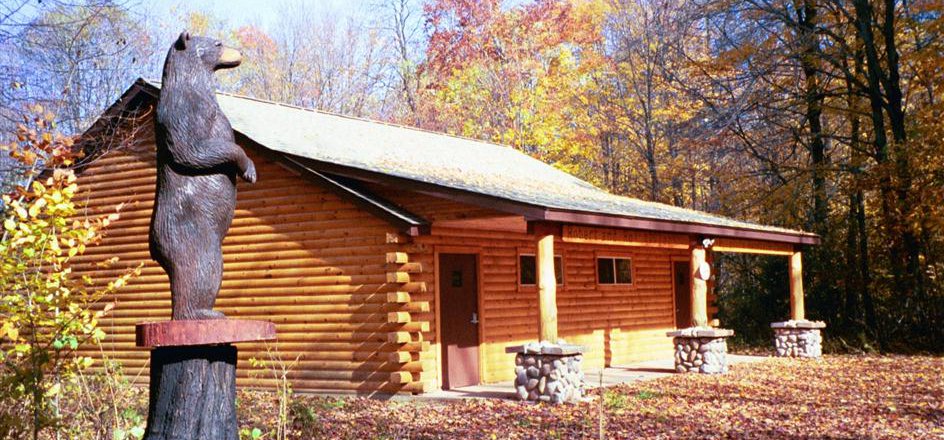
Let’s talk about women in the outdoors. In the last number of years, they have taken it by storm. My good friend, Kirstie Pike, CEO of Prois outdoor hunting apparel, started with absolutely nothing. She got sick and tired of wearing men’s camo and started her own company and the rest is history. She’s one of the foremost camo companies for women in the world. You look at that, her timing’s right and she built a brand. There are many other people, there’s a list and I can’t start naming one person because then 100 other people will say, “He didn’t mention mine,” but I will mention Bianca Jane Burnett. Hunting healed her. If you’ve never heard her show, just google Humble Hunt with Bianca Jane and healing. What’s that got to do with hunting deer, with harvesting, with killing an animal and eating them? It’s everything. You have to listen to her story because her story will bring tears to your eyes, smiles to your face and a little bit of laughter. That’s what hunting is. Hunting is stories. We’ve been sharing with Scott here about stories. Let’s share the story of how that girl went from being a vegan to an eater of organic meat.
You wouldn't believe how much good is within your reach. Share on XMy oldest daughter for some reason, with some of her friends, got put off to some things and was a vegan for quite a while. She didn’t catch on to hunting until later, but all of a sudden, she started looking at paleo diets and things like that and she warmed up to it. It has always been part of our family. It wasn’t anything she was against that’s just wasn’t for her. I took her deer hunting and she took her first deer and the fact that she now locally gets her own meat has changed her. Angela does eat protein now from a different source.
There are many things that happen in our lives and some people say, “What are your proudest moments?” Honestly, aside from family and as you’ve been talking to Brooke and the awards that she’s won nationally, she was Cabela’s and SCI’s national youth honor of the year. That was amazing, being able to go and see her get that award. From my program, I had a young man that was in the service and he was in a firefight in Afghanistan. He had a 50-caliber and it locked up. He told me that my class saved his life because he used my sequencing and was able to check down on his weapon and be able to get it back to functioning again. He made it out of that firefight from my class. How rewarding is that?
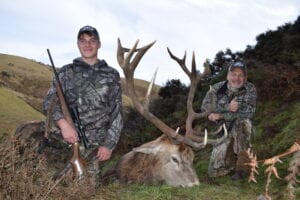 There was a young man that went with us to New Zealand. His father was a firefighter and killed in 9/11 in the towers. Being able to take him to New Zealand and be a mentor for him. He hunted in his dad’s flannel shirt. These are the kinds of things. I took a young man who had terminal brain cancer to New Zealand and he shot his first big game. He shot up a big stag and it was amazing for us to experience that with him. Unfortunately, he passed, but knowing the outcome and being able to take kids and do some of these things. I had a young lady that had ovarian cancer and so I gave her a huge project trying to give her something else to think about because of all the things that she was going through. She did an exceptional job being in charge of that.
There was a young man that went with us to New Zealand. His father was a firefighter and killed in 9/11 in the towers. Being able to take him to New Zealand and be a mentor for him. He hunted in his dad’s flannel shirt. These are the kinds of things. I took a young man who had terminal brain cancer to New Zealand and he shot his first big game. He shot up a big stag and it was amazing for us to experience that with him. Unfortunately, he passed, but knowing the outcome and being able to take kids and do some of these things. I had a young lady that had ovarian cancer and so I gave her a huge project trying to give her something else to think about because of all the things that she was going through. She did an exceptional job being in charge of that.
We took a student hunting right before he had a very serious kidney transplant. We’ve had kids that we take with disabilities locally. I’m not sure if you’re probably aware of it, but kids with cerebral palsy, there’s an app with the iPhone and an attachment to the scope now where the kids can use the iPhone as the target. For kids that can’t look through the scope and use their fingers at the same time, it’s been a godsend for them to be able to pull the trigger and be able to hunt. Some of the kids that we’ve got are able to do that. These are offshoots of being able to take kids in the outdoors. It’s rewarding. I can’t tell you how great they make me feel and it’s all worthwhile being able to be a mentor. On several states, I have mentored some programs. I still think that it needs to be earlier because if we don’t have them early on, we’ve lost them. With iPhones and all this garbage, they are distracting in many ways. It’s tough to keep their attention for a little while.
If an educator is reading this, a lot of my audience are educator, what would be the three to five things that you would recommend they do if they’re interested in starting to nurture a program like yours?
One, it would be, depending on your state, you need to get a hold of your local Department of Environmental Conservation and feel them out and see what they would recommend or make sure you know what the game plan is and what the ages are and all that. Sometimes people come up with great plans and within their state, they’re not able to do what they’re hoping to do. Even raising fish and being able to release them, having trout in the classroom, that’s not always a give me. There are rules and regulations with some states that make that difficult. The other thing is to make a network, you’ve got to find local people that are experts. You wouldn’t believe the experts that I have around here.
There are several national television shows within a short radius of us. Some of the guys that I have, Craig Southard for doing goose hunts and duck hunts around here. Finding local people that would be into helping you out. They’re upstanding people and they are people that you can trust with kids. They’re going to help you. Maybe you’re not the greatest goose hunter yourself, but you know somebody who is, and then you can take them out that way. Trying to find outfitters and even if it’s fishing guides. Everybody’s going to have their own local focus.
If you’re looking for a good fishing guide, you’ve got to try to see a rating on them. I’ve gone through a lot of fishing guides in Alaska and I had a few that were bad. You don’t want to ruin somebody’s experience with something like that. You spend some time finding out, “Here’s my network. Here’s what we can do. We can take kids doing this.” There’s a school in Ohio and they’re doing a STEM program where the kids develop their own fishing lures. They follow that up by taking those kids to Lake Erie and they go fishing with their own fishing lures. They make the lures with a 3D-printer. You’ve got experts out there. The other thing would be to also get a feel out in your community for those people who would help you.
Every project that we’ve ever done, the local community has stepped in. They volunteered. We’ve got plumbers. I’ve got a guy, Aaron Jahnke. When I need a hole drilled, that dude is there and construction companies. When we built a log home, we bought the log home kit. We had a lot of help to convert that to home. By having a resource where you’ve got all of that information and better than that, a family stepped forward that wanted it. Now it’s called the Appleby Wildlife Research Center because it’s named after family members. There are people out there that would love to have a building, or a program named after them if they wanted to help to make sure that it became a reality. Those would be my three recommendations to do. You wouldn’t believe how much good is within your reach.
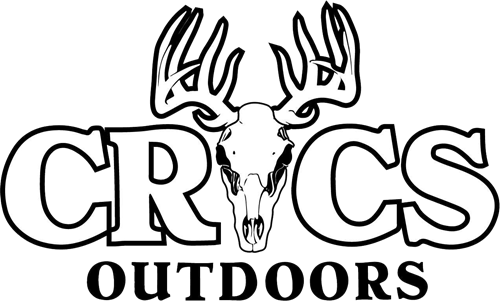
Scott, on behalf of hundreds of thousands of my audience across North America, if you look at my stats pretty much globally, somebody listens to my show every day. I laugh at that because it’s something that’s it’s grown from absolutely zero organically. I meet people like you and Brooke. It’s remarkable the journey that I’m on. I look forward to continuing this journey and figuring out how we can get Whitetail Rendezvous actively engaged and help with the process, especially the podcast process. Look for that because there will be interns from CRCS on Whitetail Rendezvous, one as a cohost, two as an editor, and three as a social media whiz-bang. Those are the three areas that I’m going to work with and you and Brooke. I would encourage you, if you have a voice in your state, go talk to the principal, go talk to your superintendent. If you sit on the school board, start something. We all know this axiom “The journey begins with a single step.” I go to places in the world as Scott does and the first thing is we’ve got to get out of bed. Many days later we go back to bed, but in between, we’ve done a whole lot. Scott Jordan, thank you so much for being our guest. This is just the beginning. I’m excited to work with you and your program and bring it across the United States.
Bruce, I’m proud and thankful for Whitetail Rendezvous and for you taking the time out of your busy day to help us and have us on. I look forward to working with you again. Anytime and any questions and if anybody wants to contact me if you provide those outlets for your public, I’d be glad to entertain any visitors. Thank you again for everything that you do. We appreciate it.
Important Links:
- Scott Jordan
- CRCS
- SJordan@MyCRCS.org
- Facebook – CRCS Outdoors
- Instagram – CRCS Outdoors
- Twitter – CRCS Outdoors
- Wet Net Charters
- CRCS Outdoors
- American Buffalo: In Search of a Lost Icon
- New.CRCSWeb.com/wildlife/Site2
- Prois
- Humble Hunt
About Scott Jordan
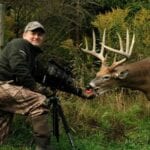 Fisheries & Wildlife Teacher at Cuba-Rushford Central School
Fisheries & Wildlife Teacher at Cuba-Rushford Central School
